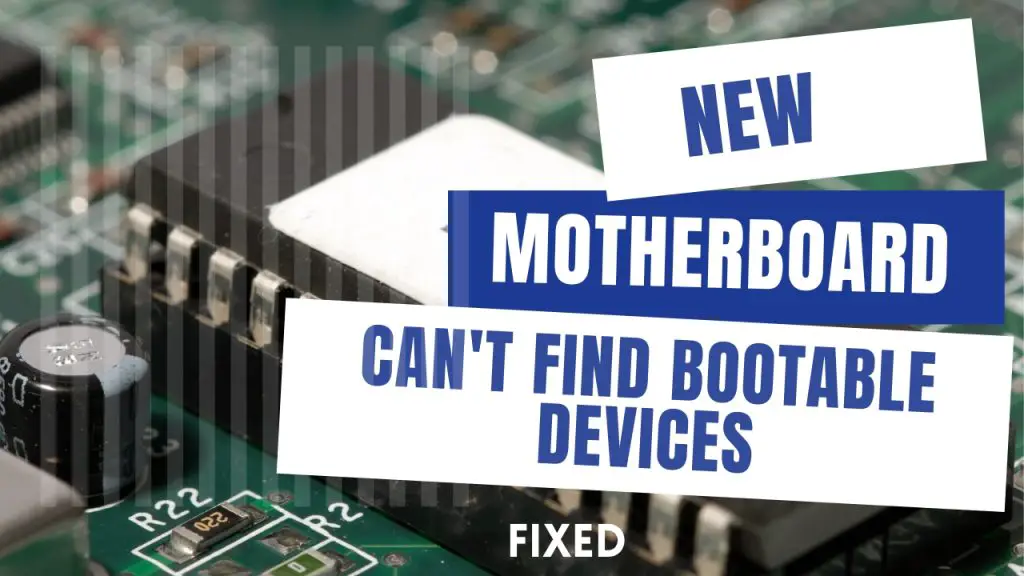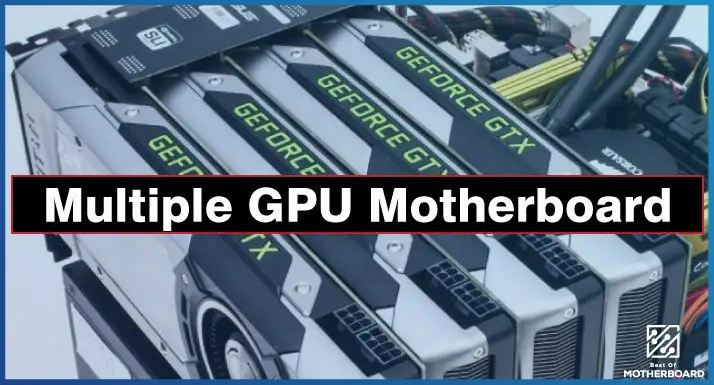The BIOS is probably not set up correctly if your motherboard is brand new and can’t detect bootable devices. The BIOS is a set of setup instructions used by the computer. The BIOS must be changed when a new motherboard is installed.
A bootable device is a storage device from which a computer can start up, typically a hard drive, DVD, USB flash drive, floppy disk drive, or CD-ROM drive (for startup). To boot, a bootable device needs to have an operating system on it.
Do not worry if you are unsure how to do this. We’ve got your back. This article will demonstrate how to set up your new motherboard’s BIOS to recognize bootable devices. Alternatively, you can use an external device to start the computer.
A New Motherboard Can’t Find Bootable Devices?
The motherboard might be brand new if your computer can’t find bootable devices. The motherboard might not have the appropriate drivers installed, which is the likely cause of this.
You can attempt to install the drivers yourself or ask the motherboard manufacturer for assistance. It’s also possible that the BIOS is incorrectly set up, preventing the computer from detecting bootable devices. You can try to fix this yourself or ask the motherboard maker for assistance.
Why Isn’t Your System Able to Detect Any Bootable Devices?
Your system should have a boot device since every computer uses one to launch macOS or Windows 10. Your system won’t start if it can’t find a bootable device, and you’ll be stuck staring at a black screen after pressing the power button. This error message may appear for several reasons.
The computer’s BIOS might not be set up correctly, for example. The system drive (Windows) and the boot device sequence for a desktop or laptop computer are stored in the BIOS.
Additionally, BIOS includes the hard disk address and instruction sets required to read your system’s MBR. The startup file for the system, which is used to start Windows, is located in that MBR.
Therefore, the MBR cannot be found if BIOS cannot locate a bootable hard drive. The hard drive of the computer might also not be operating correctly. In some circumstances, a corrupt or damaged boot sector might also bring it on. Do not panic if you encounter this error message.
Make sure the boot order is correct by first checking the BIOS settings. If that doesn’t solve the problem, try starting your computer from a live CD or
- Broken hard drive
- Corrupt partition table or hard drive boot sector
- Change in the system boot priority
- Nonworking or lose SATA/IDE cable
How To Fix New Motherboard Can’t‘ Find Bootable Devices Issue?
Your bootable devices are probably the problem if you recently installed a new motherboard and are having trouble getting your computer to boot up.
This article will demonstrate how to resolve this issue and restore computer functionality. For security, you must double-check the connections between your motherboard and your bootable devices.
Tighten any connections that may be loose, then try restarting your computer. You must review your BIOS settings if this does not resolve the issue. Try the following to force your motherboard to look for bootable devices:
1. Check the BIOS
You must ensure that your bootable devices are configured correctly in your BIOS. You should also double-check the boot order. To enter the BIOS, press the power button and then begin pressing ESC, F1, F2, F8, or F10 once the system manufacturer’s logo appears.
You only have a few seconds before your system enters the boot sector to press those keys, so make sure you do. The keys to press differ from manufacturer to manufacturer, so check the peculiar key for your manufacturer. It must be one of the following: ESC, F1, F2, F8, or F10.
Press F9 after entering the BIOS to select and load the BIOS setup default settings. Use the up or down arrows on your keyboard to choose your computer’s initial internal hard disk drive.
To save the settings, press F10. Use the arrow keys to select Yes, and press Enter if prompted to save changes.
Save your changes and restart your computer once you’ve confirmed that your BIOS settings are correct. If the error persists after adequately configuring the BIOS, the problem is most likely with the hard disk.
2. Reset the hard drive
You may need to reset your hard drive because it is the source of the error. Press the power button for a few seconds to turn off the computer. Unplug the power supply and then the hard drive. Restart your computer after reconnecting the hard drive. If this does not work, proceed to the next solution.
3. Replace the hard drive and install a new Windows operating system.
If your hard disk is damaged, replace it and install it correctly. You should also install a fresh copy of the Windows operating system on the new hard drive. Check that the hard drive’s cord is securely connected. Then restart your computer.
Can I put my boot drive on a new motherboard?
It is possible to install your boot drive on a new motherboard; however, this may not work correctly if the new motherboard is incompatible with your current boot drive. You can use it if the new motherboard accepts your old hard drive and they have the same connection capabilities.
However, you may need to make a few changes before installing the old boot drive on your new motherboard.
You may need to reinstall your operating system and all your programs if you do this. To avoid this, it is recommended that you get a new boot drive that is compatible with your new motherboard.
How Do I Boot My Computer After Replacing My Motherboard?
If you have replaced your motherboard, you must boot your computer before you can use it. This process varies according to the computer, but you can take a few general steps.
It would help if you first reconnected your computer’s power supply. Next, connect your computer’s data cables, which include the USB, HDMI, and Ethernet cables. After you’ve combined all of your cables, you’ll need to insert your computer’s operating system disk into the disk drive and install the operating system.
Finally, restart your computer and press the key that activates your BIOS. Check the BIOS to ensure that everything is in working order.
After completing these steps, your computer should be operational. If you encounter difficulties, consult your computer’s manual or the manufacturer.
How Do I Fix a UEFI No Bootable Device?
If you’re having trouble booting your computer, it could be an issue with your UEFI settings. If you installed your operating system in legacy mode, you would most likely encounter the error when restarting or rebooting the system. You will not be able to recover from the failure simply by changing your BIOS setting to UEFI. You must reinstall the operating system.
To begin, check your UEFI settings to ensure that your boot order is correct. If your computer is set to boot from a USB drive or CD-ROM first, it may attempt to boot from a device that lacks an operating system.
Next, check your boot options to ensure that all appropriate options are enabled. For example, if you want to boot from a USB drive, provide the “Boot from USB” option is enabled in your UEFI settings.
Finally, your UEFI firmware may need to be updated. If unsure how to proceed, consult your computer’s manual or contact the manufacturer. If you follow these steps, you should be able to resolve the issue and successfully boot your computer.
Conclusion
A few possible reasons why your new motherboard cannot detect any bootable devices. It is possible that the motherboard is incompatible with the appliances you are attempting to boot from, that the BIOS is incorrectly configured, that the boot order is incorrect, or that there is a problem with the new motherboard itself.
If you are still experiencing problems after attempting the troubleshooting steps in this article, you may need to contact customer support for your motherboard for additional assistance.



![What Are Motherboard Standoffs? [Guide] 4 What Are Motherboard Standoffs](https://bestofmotherboard.com/wp-content/uploads/2022/01/What-Are-Motherboard-Standoffs.jpg)
![Does it Matter Which PCIe x16 slot I Use? [Guide] 5 Does it Matter Which PCIe x16 slot I Use](https://bestofmotherboard.com/wp-content/uploads/2022/01/Does-it-Matter-Which-PCIe-x16-slot-I-Use.jpg)